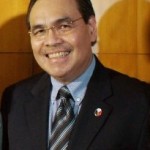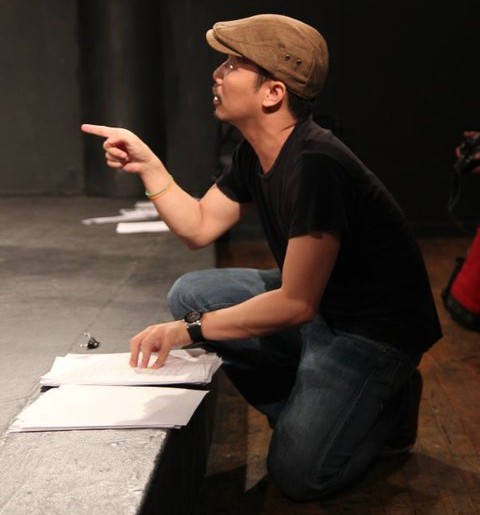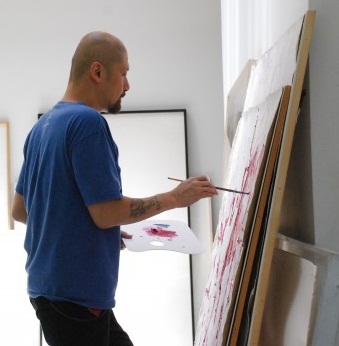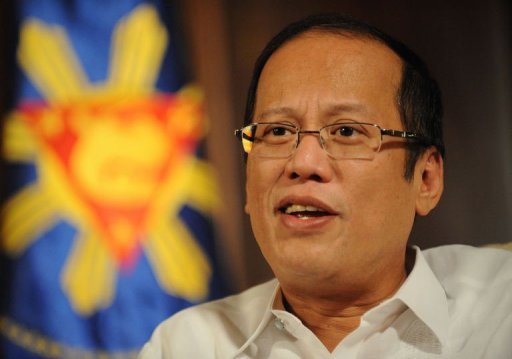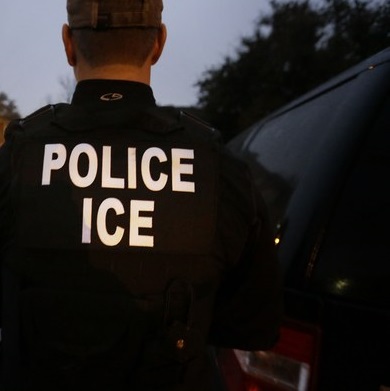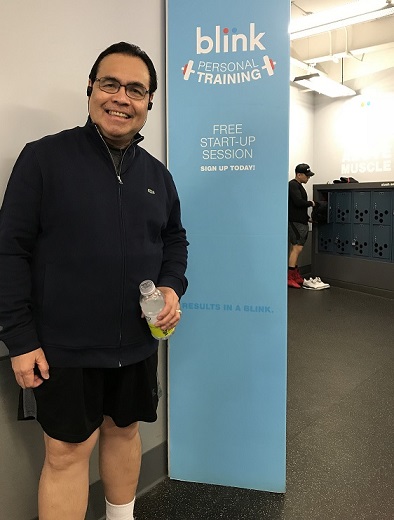He repaired typewriters for Woody, Coppola; after 28 years he’s closing up shop
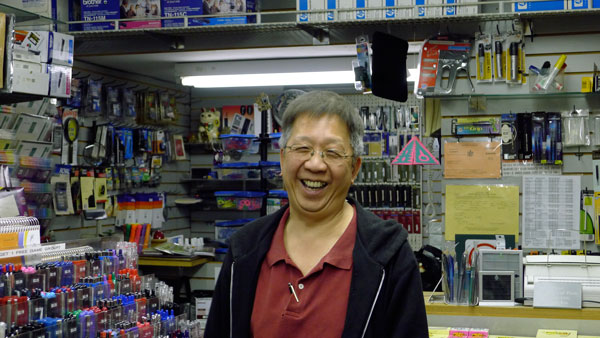
Woody Allen buys ribbons from Bino Gan, 60, who is retiring on December 31. Photo by Heather Dubin/The Villager
Bino Gan of Typewriters ‘N Things (profile) from Rupeshi Shah on Vimeo.
After 28 years in the business, Bino Gan, owner of Typewriters ’N Things in the West Village, is closing up shop. Gan and his wife, Nita, who also sell office supplies and stationery, will bid their loyal customers a final farewell on Dec. 31.
In an interview last week, Bino Gan spoke about his career, the rise and fall of the typewriter, and the couple’s impending retirement.
Originally from Manila, in the Philippines, Gan arrived in New York in 1976, and started working at his brother’s store in the family business — typewriters. His brother, who owned a store for 20 years in Midtown, taught Gan the trade.
In 1985, Gan branched out with his sister, and they purchased a typewriter business together, which she later ran on her own for 18 years. After two years of working with his sister, Gan went solo and opened Typewriters ’N Things on Eighth Ave. near Horatio St.
The store is currently in its third location. Gan has kept it within a three-block area on the same avenue all these years.
“I just love this neighborhood,” he said. “In Midtown, where I used to work, there were only offices. Over here, I’m servicing mostly individuals — and that’s a big difference.”
Local residents also bring in lots of business for supplies, which are plentiful and neatly displayed in the 300-square-foot space, with a workshop down below.
Following the advent of computers, Gan had to adjust to a market that was no longer exclusively demanding typewriters and calculators.
“In 1992, it slowed down, and I switched my main bulk of business to office supplies and stationery,” he said.
Previously, however, business boomed at Typewriters ’N Things, and there were four full-time staff, including Gan, to troubleshoot broken typewriters.
“Our generation of technicians are almost gone,” he reflected. “Not too many are left.”
Last month, Gan lost a technician who was with him 28 years, and had been working in typewriter repair since the 1950s. It was also that man who sold the typewriter business to Gan and his sister. Gan’s other technician returned to the Dominican Republic.
In addition to serving the local typewriter set, Gan bought Olympia and Olympus manual standard typewriters, mostly from Canada, fixed them up, and then exported them to the Dominican Republic and sometimes the Philippines.
According to Gan, the typewriters from Canada, which had blank letter keys, were in pretty bad shape.
“The way the kids used them in school was very rough,” he said. “The students tried to destroy the machines. They can’t have class if they were broken.” It cost less for Canadian schools to buy new ones than bother with repairs, so Gan prospered from scooping up the rejects.
He also used to sell electric typewriters until the late ’80s, and had a bench for people to sit and try them out. Gan next focused only on repairs, then when he moved to where he is now in 2001, he sold Olympia manual typewriters for a few years.
Eventually, Gan stopped selling manual typewriters since no one makes them anymore. However, there has been a resurgence of interest in vintage typewriters over the past five years.“Now everybody is looking for manuals, and I don’t have any,” Gan said.
While Gan is not exactly sure why, he does believe typewriters are making a comeback.
“I get calls from people asking me all day if I have them to sell, or do I fix them, or do I still have ribbons,” he noted.
Gan noted this demographic is in their 20s and 30s, and they are searching for Royal, Smith Corona or Remington typewriters, generally priced at $295 and up. These vintage typewriters are from the 1920s to 1940s, and are black and shiny.
A much younger generation, ages 5 to 10, is being introduced to typewriters at Poets House, a library and literary center in Battery Park City which is Gan’s client. In a phone interview, Suzanne Lunden, the publicity and marketing coordinator at Poets House, explained why there are typewriters in the children’s room, which is also open to the public.
“We think it’s a tactile introduction to writing, and the kids like the mechanical fun,” she said. So much so, that they call them, “screenless computers.”
Gan’s typewriter customers are a specific type. Most are writers and reporters who belong to an older generation. There are a slew of celebrities — Woody Allen, Francis Ford Coppola and Tommy Hilfiger — who have brought in typewriters to be fixed. Repairs cost $125 and up.
Gan produced a receipt from Coppola dated Oct. 18, 2002, for the cleaning and tuning of his Olivetti Lettera 32, a popular Italian model from the ’60s.
“He told me it’s the same typewriter he wrote ‘The Godfather’ on,” Gan said. Coppola has yet to return, which may speak volumes about Gan’s handiwork, or perhaps Coppola has transitioned to writing on a computer.
Beth Bogart, a relative of Humphrey Bogart, has frequented the shop with her typewriter. William Packard, the late writer, was a regular. And Keanu Reaves, the actor, was looking to buy his own; he brought in a manual to show the Gans and get an opinion.
Gan does not recognize many of the writers who come in, nor does he use a typewriter himself, but he gets the appeal.
“It feels different,” he said. “The noise, the pounding and hitting of the key as it touches the paper.”
Gan can tell the brand and model number of a typewriter from its case. Securing the right ribbon is also his specialty. There is a universal typewriter ribbon, but he prefers to match the ribbon to the model.
As to whether the typewriter reveals insight into the writer, Gan did not refer to brands per se.
“Yes, if the machine is nice and clean, they’re clean. If it’s dirty, they are sloppy and dirty,” he said. “One time, I encountered a typewriter with lots of cockroaches and their eggs inside.”
Gan’s customers might be lost without him, and he is not sure what they will do.
“Right now I still give free estimates. Bring it in, I’m out December 31,” he joked. “I’m not coming back to tell them what to do.”
Gan did offer some simple advice.
“Put a piece of paper in, and if it doesn’t roll up, it’s finished,” he said. Once the roller is flattened, it is beyond repair. There used to be 10 companies, now all defunct, that re-covered rollers in new rubber.
The Gans, who live in Dumont, N.J., are tired and ready for new adventures. They are looking forward to enjoying time together, and traveling to the Philippines to visit family.
But Gan has some mixed feelings about his last day.
“I’m happy, I’m sad — after 26 years,” he reflected.
As for his customers, they will most likely miss him.
“Woody Allen buys his ribbons from me, six pieces at a time. He owes me an autograph,” Gan said. “When he comes in again, he’ll be surprised I’m gone.”
This article is being reprinted with permission from “The Villager,” an 80-year-old hyperlocal newspaper serving New York’s West and East Village, Chelsea, SoHo, NoHo, Little Italy, Chinatown and the Lower East Side. The video was provided by Rupeshi Shah, a senior student at NYU who interviewed Bino Gan for her broadcast news class..

